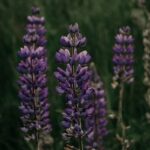Are you looking for new landscape drawing ideas to ignite your creativity? Whether you’re an experienced artist or just starting out, exploring the beauty of landscape drawing can be a rewarding and fulfilling experience. From capturing the grandeur of mountains to the tranquility of bodies of water, there are endless possibilities to explore.
In this article, we’ll delve into the world of landscape drawing and discover the different elements, techniques, and styles that artists can use to create stunning pieces of art. We’ll discuss how to choose the right materials, capture different elements such as trees and mountains, find inspiration in the outdoors, and explore various drawing styles from realistic to abstract.
Join us on this creative journey as we embrace the tranquility and beauty of landscape drawing. Whether you’re looking for tips on composition, adding color to your drawings, or sharing your art with others, this article will provide you with all the resources and guidance you need to enhance your landscape drawing skills. So grab your pencils or watercolors and let’s dive into the captivating world of landscape drawing.
Choosing the Right Materials
When it comes to landscape drawing, choosing the right materials is essential to bring your vision to life. From the type of paper you use to the medium you work with, every choice you make will impact the final result of your artwork.
Pencils
Pencils are a classic choice for landscape drawing due to their versatility and ease of use. Whether you prefer graphite or charcoal, pencils allow for precise lines and shading, making them ideal for capturing intricate details in trees, mountains, and bodies of water.
Ink
Ink provides bold and defined lines that can add drama and contrast to your landscape drawings. Consider using different nib sizes and techniques such as cross-hatching or stippling to create depth and texture in your artwork.
Watercolor
For artists who want to add a pop of color to their landscape drawings, watercolor is an excellent choice. With its translucent and fluid nature, watercolor allows you to capture the dynamic qualities of landscapes such as the play of light on foliage or the shimmering surface of a lake.
Remember that experimenting with different materials can lead to new landscape drawing ideas and styles. Don’t be afraid to mix and match different mediums to create unique and captivating artworks that speak to your personal creativity.
Capturing Different Elements
When it comes to landscape drawing, there are a plethora of elements in nature that can inspire your artwork. From the towering presence of trees to the majestic grandeur of mountains and the serene beauty of bodies of water, each element offers its own unique charm and challenges for artists. When capturing these different elements in your landscape drawing, it’s important to consider the details, textures, and colors that make them stand out.
Trees are often a focal point in landscape drawings, offering depth and dimension to the composition. From the intricate patterns of their branches to the varying shades of green in their leaves, there is no shortage of inspiration when it comes to capturing the essence of trees in your artwork.
Whether you prefer drawing individual trees or entire forests, experimenting with different techniques such as cross-hatching or stippling can bring out the details and textures that make trees come to life on paper.
Mountains are another captivating element in landscape drawings, with their towering peaks and rugged terrain. When depicting mountains in your artwork, it’s crucial to convey a sense of scale and perspective.
Paying attention to light and shadow can help create depth and dimension, while using techniques such as stippling or layering can add texture to the rocky surfaces. Whether you’re drawn to snow-capped peaks or lush green slopes, exploring different approaches to capturing mountains can add variety and interest to your landscape drawings.
Bodies of water, whether they be a tranquil lake, a rushing river, or a cascading waterfall, offer a sense of movement and tranquility in landscape drawings. Mastering the art of portraying reflections on water surfaces is essential for creating realistic and captivating representations. Experimenting with different drawing styles such as impressionistic brushstrokes or realistic detailing can add depth and character to your depictions of bodies of water in nature.
Finding Inspiration
When it comes to landscape drawing ideas, finding inspiration can often be the most challenging part of the process. The great outdoors offers a plethora of scenes and settings that can serve as the perfect subject matter for your next masterpiece. Whether it’s a serene meadow, a majestic mountain range, or a tranquil lakeside view, nature provides an endless supply of inspiration for landscape drawing.
Exploring Local Parks and Nature Reserves
One of the best ways to find inspiration for your landscape drawings is to spend time in local parks and nature reserves. These areas are often teeming with natural beauty, from colorful foliage to meandering rivers. Take a leisurely stroll through these outdoor spaces and allow yourself to be captivated by the sights around you. Bring along a sketchbook and some drawing materials so you can capture these scenes in real-time.
Traveling to Scenic Locations
If you’re looking for more grandiose landscapes to draw, consider taking a trip to scenic locations such as national parks, coastal beaches, or rugged mountains. These destinations offer breathtaking vistas that are sure to ignite your creativity. As you immerse yourself in these picturesque settings, take note of the unique features that make each location special. Pay attention to how the light plays off the landforms, the textures of different elements, and the overall mood of the scene.
Connecting With Local Artists and Groups
Another way to find inspiration for your landscape drawings is by connecting with local artists and drawing groups in your community. Often, these individuals organize outdoor sketching sessions where everyone gathers at a specific location to draw en plein air (in open air).
Being part of such a group not only exposes you to different perspectives and techniques but also creates opportunities for discovering new scenic spots that you may not have known about before. Collaborating with fellow artists can also provide valuable feedback and encouragement for your artwork.
Tips for Composition
Creating depth and perspective in landscape drawing is essential to capturing the beauty of nature. One key tip for achieving this is to use the technique of atmospheric perspective, which involves creating the illusion of depth by making distant objects lighter and less detailed than those in the foreground.
This technique can be achieved by using lighter pencil strokes or diluted colors for elements in the distance, such as mountains or trees. By incorporating atmospheric perspective into your landscape drawings, you can create a sense of distance and vastness, making your artwork more visually compelling.
Another important aspect of composition in landscape drawing is considering the placement of focal points. When selecting a focal point for your drawing, such as a striking tree or a winding stream, consider using the “rule of thirds” to position it off-center within your composition. This can create a more dynamic and visually interesting drawing that draws the viewer’s eye into the scene.
In addition to these tips, experimenting with different drawing techniques can also contribute to creating depth and perspective in your landscape drawings. For example, using hatching and cross-hatching techniques with pencils can add texture and dimension to elements such as grassy fields or rocky terrain.
Similarly, employing stippling or pointillism techniques can add visual interest and depth to areas like clouds or bodies of water. Landscape drawing offers endless opportunities for creativity and expression, so don’t be afraid to explore different techniques and styles as you work on capturing the beauty of nature.
| Landscape Drawing Tips | Depth and Perspective Techniques |
|---|---|
| Use Atmospheric Perspective | Create distance by making distant objects lighter |
| Consider Focal Point Placement | Use rule of thirds for dynamic compositions |
| Experiment with Drawing Techniques |
Adding Color
When it comes to landscape drawing ideas, adding color can bring your drawings to life and create a more vibrant and captivating piece of art. There are various techniques for adding color to landscape drawings, whether you prefer working with traditional media like colored pencils and watercolors, or digital tools such as graphic design software. Here are some different techniques to explore:
Adding Color Techniques:
- Colored Pencils: Utilize colored pencils to layer and blend colors, creating rich textures and details in your landscape drawings. Experiment with different pressure and strokes to achieve the desired effects.
- Watercolor: Explore the transparent and fluid nature of watercolors to create soft, flowing washes that capture the natural beauty of landscapes. Use wet-on-wet or wet-on-dry techniques for varying textures and effects.
- Digital Painting: If you prefer working digitally, use graphic design software to digitally paint landscapes. Take advantage of various brush tools, layers, and blending modes to achieve realistic or stylized effects.
In addition to traditional materials like colored pencils and watercolors or digital tools, consider experimenting with unconventional materials for adding color to your landscape drawings. For example, try using pastels or even coffee stains for unique and textured effects that can add an interesting twist to your artwork.
By exploring different techniques for adding color to your landscape drawings, you can bring a new dimension of depth and visual interest to your art while capturing the beauty of nature in unique and captivating ways. Whether you prefer a realistic approach or a more abstract interpretation of landscapes, adding color will enhance the overall impact of your artwork.
Exploring Different Drawing Styles
When it comes to landscape drawing ideas, artists have the opportunity to explore different drawing styles to bring their artwork to life. Realistic landscape drawings aim to depict nature as accurately as possible, paying close attention to details such as the texture of rocks, the movement of water, and the intricate patterns of leaves on trees. This style requires a keen eye for detail and precision in capturing the natural world.
On the other hand, impressionistic landscape drawings focus on capturing the essence of a scene rather than its precise details. Artists using this style often use quick brushstrokes or pencil marks to create an overall impression of light, color, and form. The emphasis is on conveying a mood or atmosphere rather than an exact representation of the landscape.
Finally, abstract landscape drawings offer artists the freedom to interpret nature in a highly personal and imaginative way. This style may involve distorting forms, exaggerating colors, or simplifying shapes to create a unique and expressive interpretation of the natural world. Abstract landscape drawing allows for experimentation and creativity in depicting landscapes.
In summary, exploring different drawing styles for landscape drawing ideas offers artists the opportunity to express their unique vision of nature. Whether it’s through realistic rendering, impressionistic techniques, or abstract interpretations, each style brings its own distinctive charm and appeal to landscape drawings.
| Drawing Style | Description |
|---|---|
| Realistic | Depicts nature with precise attention to detail |
| Impressionistic | Captures the essence of a scene with quick brushstrokes or pencil marks |
Sharing Your Art
When it comes to landscape drawing ideas, sharing your art with others can be a rewarding experience. Whether you are a beginner or an experienced artist, displaying and sharing your landscape drawings can bring joy not only to yourself but also to those who appreciate your work. Here are some ideas for displaying and sharing your landscape drawings:
- Exhibitions: Participating in local art exhibitions or galleries can give you the opportunity to showcase your landscape drawings to a wider audience. Look for opportunities to join art shows or fairs in your community.
- Online Platforms: In this digital age, there are numerous online platforms where you can share your artwork with a global audience. Consider creating an online portfolio on websites such as Behance, DeviantArt, or Instagram to display your landscape drawings.
- Art Markets: Look for local art markets or craft fairs where you can set up a booth to sell prints of your landscape drawings. This can be a great way to connect with potential buyers and collectors while getting valuable feedback on your work.
Sharing your landscape drawings with others allows you to connect with fellow artists and art enthusiasts who share the same passion for nature and creativity. It also provides the opportunity for growth and improvement as an artist through constructive feedback and interactions with different audiences.
Whether it’s through physical exhibitions, online platforms, or art markets, finding ways to display and share your landscape drawings can help you gain recognition as an artist while bringing the beauty of nature to the eyes of many. Embrace the opportunity to inspire others with the tranquility of landscape drawing.
Conclusion
In conclusion, landscape drawing is a beautiful and tranquil art form that allows artists to explore the natural world and express its beauty on paper. Whether using pencils, watercolors, or other media, capturing elements such as trees, mountains, and bodies of water can be both challenging and rewarding. Finding inspiration for landscape drawing ideas is as simple as exploring the great outdoors, where endless natural scenes are waiting to be depicted on paper.
Tips for composition play an important role in creating depth and perspective in landscape drawings, while adding color through different techniques can enhance the realism or artistic expression of the artwork. Additionally, exploring different drawing styles such as realistic, impressionistic, or abstract can add variety to your portfolio of landscape drawings and expand your creative abilities.
Lastly, sharing your art with others is an important part of the artistic process. Whether displaying your landscape drawings in galleries or sharing them online through social media platforms, allowing others to experience the tranquility captured in your artwork can bring joy to both you as the artist and those who view your work. Embracing the tranquility of landscape drawing offers not only a beautiful way to connect with nature but also a means of sharing that connection with others.
Frequently Asked Questions
What Are the 3 Types of Landscape Drawing?
The three types of landscape drawing are representational, impressionistic, and abstract. Representational landscape drawings aim to realistically depict the scene, while impressionistic landscape drawings focus on capturing the overall essence and mood of the landscape. Abstract landscape drawings, on the other hand, involve interpreting and simplifying the natural forms and structures of the landscape.
How Do You Draw the Best Landscape?
To draw the best landscape, it’s important to first observe and study the natural environment. Pay attention to details such as light, shadow, textures, and perspective.
Start by sketching out the basic shapes and forms of the landscape using light pencil strokes before adding in more details. Experiment with different mediums such as pencils, charcoal, or pastels to capture the unique characteristics of the landscape.
How Do You Draw Perspective Landscape?
Drawing a perspective landscape involves understanding how to create depth and space on a two-dimensional surface. Start by identifying a vanishing point and establishing horizon lines to create a sense of distance in your drawing.
Use techniques like foreshortening and overlapping to convey depth within your landscape drawing. Additionally, paying attention to scale and proportions will also help create a convincing perspective in your artwork.

Welcome to my gardening blog! I am passionate about plants and enjoy sharing my knowledge and experiences with others. In this blog, I will write about everything related to gardening, from tips on how to get started to updates on my own garden projects.





